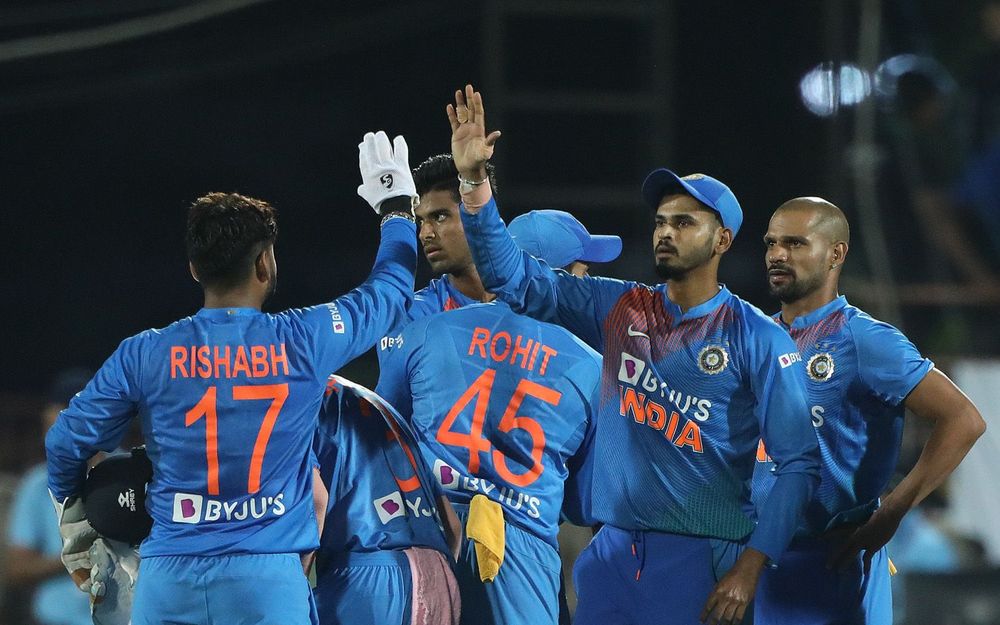Floating middle order only solution for Team India in T20s

BCCI
India’s struggle with the No.4 position in limited-overs format is well-known with the selectors struggling to finalise a particular player. However, is it the fault of the players or the fault of the system that is not getting the most out of the players who have shown their capability in the IPL.
India’s struggle with the No.4 position in limited-overs format is a fact and the selectors have had nightmares thinking about the position. Right from trying Yuvraj Singh, the selectors have picked, chose and played as many as 6 players in the haunted position. Ambati Rayudu, who looked dead on to nail the spot failed as did KL Rahul and Rishabh Pant in the past.
While several batsmen were tried and tested, none justified their selection, leaving the selectors looking elsewhere for options. Well, is it the impatience of the selectors that have led to the selection crisis? No, it is the position that is cursed in itself and its high time that the selectors have a more floaty approach towards the middle order.
What’s floaty?
A floating middle order in play removes a major chunk of doubts of the position as it allows a wider pool of players to be selected at the position. Why does it make it easy for the selectors? For a fact, it makes it easy and difficult for the management finding players to suit such roles are often difficult. So how does it make it easy for them? Well, with the talent pool that already exists on the domestic circuit and it makes it easier for the selectors to pick players.
The emergence of this concept was as many other things in the IPL, where we see players having flexible roles at their clubs. With Suryakumar Yadav, the Mumbai Indians not only play the right-handed batsman as an opener at times but also have played as a floater at No.3, 4 and as a finisher at No.6.
In 71 innings that Yadav has played, he has scored nearly 1544 runs with most runs scored at No.3 and No.4. Despite the majority of his runs coming in those positions, the right-hander has also scored 226 runs at an average of 37 batting at No.7. On the same page, we have also seen players like Rishabh Pant bat in at No.3, 4 and 5 with nearly 1736 runs in his 54 IPL games.
Batting at No.4, the left-hander has scored nearly 989 runs at an average of 43. Meanwhile, other options like Hardik Pandya and Vijay Shankar have played most of their games at No.6, while having also played at No.4 when the team required them. A similar concept would be utilised under the floating middle-order system with the national team.
How does it help the national team?
Well for starters, it gives the Indian team the required flexibility in the team selection. With the floating middle order in play, the selectors can opt for a dynamic combination, picking as many as two or three all-rounders in the playing XI. However, under this system, it does not have any say on specialist roles of the senior players.
The top three would be left unchanged, with their roles establishing the foundation of the playing XI. And with the bowlers, bottom three would be picked up first, followed by the picking of the all-rounders before the selection of the floating middle order. Picking the players for the floating middle order, in the end, allows the selectors to understand the dynamics of selection.
Picking up players like Vijay Shankar and Hardik Pandya in the playing XI after the three bowlers and three batsmen would give room for three players to be picked for the floating roles. The selectors would have to pick a wicketkeeper, who would also be part of the floating system.
In the current Indian domestic setup, there are as many as four keepers in the country who would be suitable for the position. Dinesh Karthik, Rishabh Pant, KL Rahul and Sanju Samson have all played floater roles in the past. Not only have their opened the innings when the team has required them to, but have also played lower down the order and scored some quick-fire runs.
For the other two batting positions, the pool of Iyer, Yadav, Shubman Gill, Mayank Agarwal, Prithvi Shaw and Manish Pandey who have all performed well on the domestic circuit on a consistent basis. The system is similar to the ones that the Indian team utilised in the Cricket World Cup 2019, where the batsmen’s positions were interchanged based on the match situation. India could very well try this set-up in the series against West Indies, a year before the 2020 T20 World Cup in Australia.
What does it reduce?
It majorly reduces the complacency of the Indian batsmen, given that there is ample competition for the spot. Further, it would make the selection policies uniform, giving more chances for youngsters to feature who have performed well domestically in the T20 format. For example, a player like Devdutt Palikkal would be in the pool of players that the selectors could then pick from.
In the recently-concluded Syed Mushtaq Ali Trophy, we saw a wide range of floating positions in play with R Ashwin, Deepak Chahar, Chaitanya Bishnoi opening the batting for their team and further made it to the semi-final stage of the tournament.
Further, it removes the pressure of batting positions attached to them, making them multi-faceted players instead of being stuck on the conventional batting positions, like ‘No.4.’ It is indeed high time we realise that the batting position is going to be left behind fast in the future, with floating position becoming the immediate future of T20 cricket.
Cricket FootBall Kabaddi
Basketball Hockey
SportsCafe
